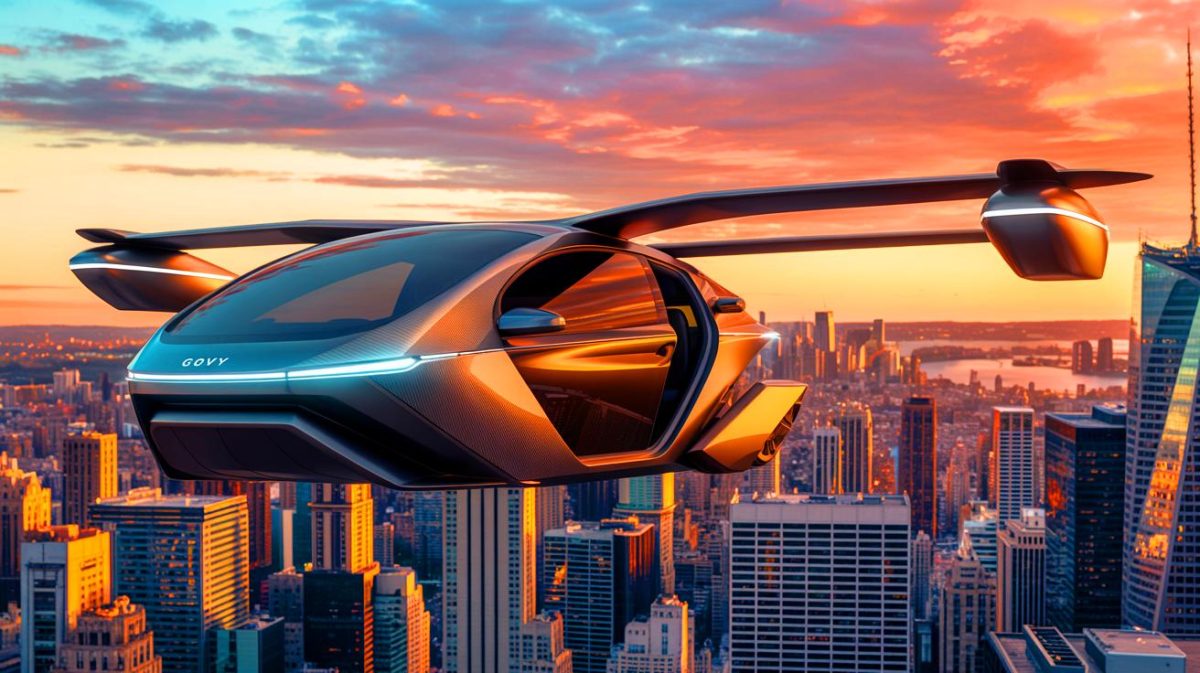| IN A NUTSHELL |
|
In an era of rapid technological advancements, the realm of transportation is poised for a major transformation. The introduction of flying cars, once a futuristic dream, is now becoming a reality. One of the most exciting developments in this field is the unveiling of the Govy AirCab by China’s GAC Group. This groundbreaking electric vehicle, showcased at the Hong Kong International Auto and Supply Chain Expo, is set to redefine urban travel with its innovative design and advanced features. As the world eagerly anticipates the arrival of this flying car, let’s delve into what makes the Govy AirCab a potential game-changer in the low-altitude economy.
The Revolutionary Design of the Govy AirCab
The Govy AirCab is a two-seater vehicle that boasts a remarkable design, crafted with a 90% carbon fiber fuselage that significantly reduces its weight. This lightweight structure, coupled with its multirotor eVTOL (electric vertical take-off and landing) capability, makes it an ideal candidate for the emerging market of air taxis and short-hop personal aircraft. The vehicle features gull-wing doors and a top-mounted rotor, enhancing its aesthetic appeal and functional efficiency.
One of the most notable aspects of the Govy AirCab is its charging efficiency. With high-density, large cylindrical batteries, the AirCab can achieve a full charge in just 25 minutes and a 50% charge in 15 minutes. This rapid charging capability underscores the vehicle’s suitability for urban environments, where quick turnaround times are crucial. Additionally, the AirCab is equipped with advanced technologies such as 5G connectivity, voice assistant, and cloud-based systems for self-checks and flight redundancy, ensuring a safe and seamless flying experience.
Pioneering the Future of Urban Air Mobility
The launch of the Govy AirCab by GAC Group is a significant step in the broader movement towards ‘low-altitude’ air transportation. This sector is projected to become a trillion-dollar industry, with numerous Chinese automakers, including XPeng, Geely, and Changan, entering the race to capture early market share. GAC’s commitment to this vision is evident in their strategic approach to the development and deployment of the AirCab.
Currently, airworthiness certification for the Govy AirCab is in progress, with trial operations already underway. GAC anticipates that mass production will commence by 2026, with the first deliveries to customers scheduled for the same year. This timeline positions GAC as a frontrunner in the urban air mobility space, leveraging its expertise and resources to bring the future of transportation to life.
Competitive Landscape and Market Strategy
In the competitive landscape of flying cars, GAC faces direct competition from XPeng’s AeroHT Land Aircraft Carrier, which is expected to have a similar production and delivery timeline. Priced at approximately 2.07 million yuan ($288,000), XPeng’s offering is slightly more expensive than GAC’s AirCab, which is estimated at 1.69 million yuan ($233,000). GAC aims to undercut its competitors by offering a more affordable option while simultaneously expanding its global footprint.
GAC’s strategy involves using the Govy AirCab as a tech flagship to position itself as a global mobility brand, not just a conventional automaker. The company’s goal is to dominate the wave of short-range air mobility in densely populated urban areas, especially in China’s megacities. By doing so, GAC is setting the stage for a new era of transportation that could revolutionize how we move within cities.
Challenges and the Road Ahead
While the prospects for the Govy AirCab are promising, the path to widespread adoption is not without challenges. Technical advancements, regulatory approvals, and public acceptance are all critical factors that will determine the success of flying cars in urban environments. GAC’s aggressive push into electric and smart mobility reflects its confidence in overcoming these hurdles.
As we stand on the cusp of a transportation revolution, the question remains: Will the Govy AirCab and its counterparts succeed in transforming urban mobility? As the world watches the developments in this exciting field, the answer lies in the continued innovation and adaptation to the evolving landscape of technology and transportation.
Did you like it? 4.7/5 (23)








Wow, un vrai voiture volante! Je me demande combien ça coûte vraiment à entretenir? 🤔
Les portes en ailes de mouette sont super stylées! Mais est-ce vraiment pratique pour la ville?
25 minutes pour une recharge complète, c’est impressionant! Mais où sont les stations de recharge?
Je suis curieux de savoir combien de temps dure une charge dans des conditions normales d’utilisation.
Une révolution dans le transport urbain ou juste un joli gadget pour les riches?
Quelqu’un sait si ça nécessite un permis de pilote? 🚁
J’espère que ça ne deviendra pas un jouet pour les millionaires seulement.
Les véhicules volants vont-ils rendre les embouteillages obsolètes? 😊
Est-ce que ça marche sous la pluie? J’aimerais pas être mouillé en vol! 😅